

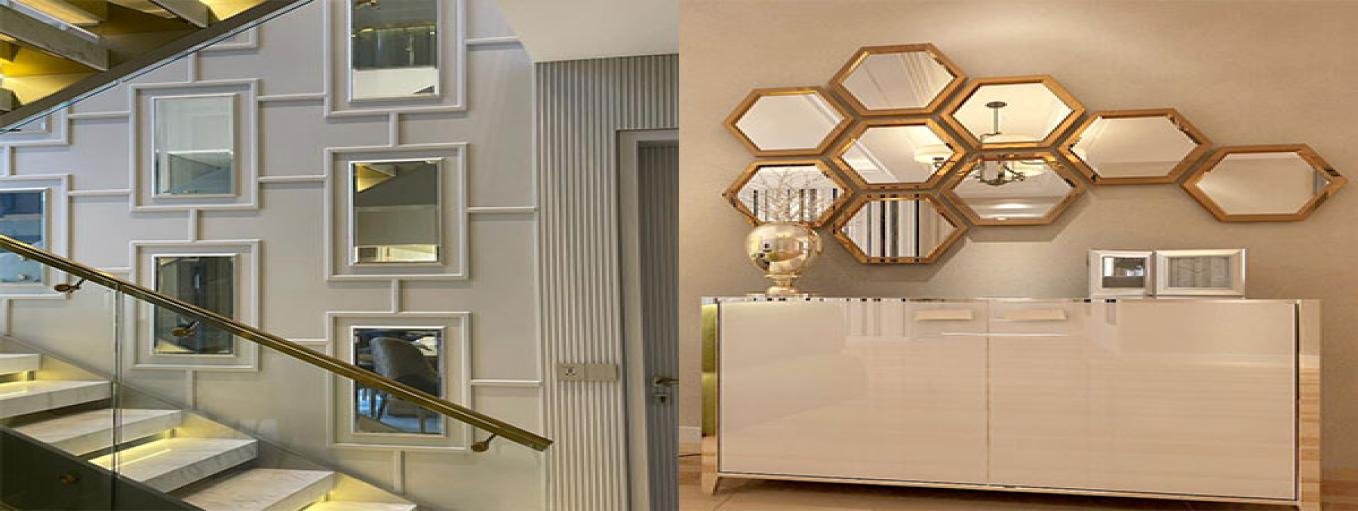
Mirrors have emerged as a vital component of contemporary interior design, celebrated for their ability to elegantly transform spaces. Gone are the days when mirrors were merely functional objects relegated to bathrooms and dressing areas; today, they serve as statement pieces, infusing homes with luxury and drama.
In this blog, we delve into the allure of decorative mirrors for living rooms, offering insights into selecting the perfect unique mirror to elevate your space.
The living room, as the heart of the home, holds a special significance for mirror placement. Beyond their decorative value, mirrors can contribute to the perception of space, and daylight illumination, while adding dimension to your interior design.
Additionally, they serve as focal points within your living space, directing attention towards specific areas or architectural elements.
Closer to Windows: Placing mirrors closer to windows is an ideal strategy to maximise natural light in a space. The mirror captures and amplifies sunlight, brightening dark corners, creating a luminous ambience and making the space appear larger.
Entry and Exit Points: Mirrors strategically positioned near entry and exit points can create a welcoming atmosphere and adding a sense of depth to the room.
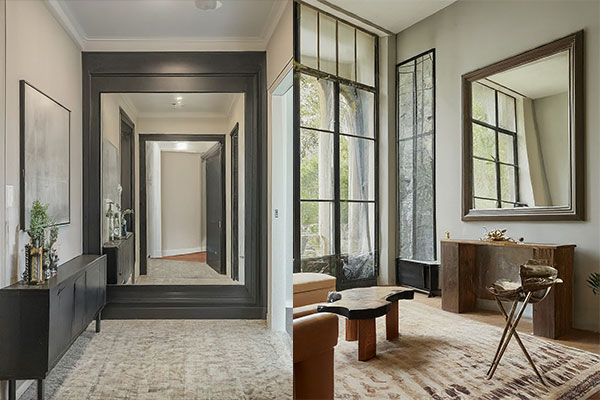
Consider the shape of the mirror with the overall design aesthetic of the living room. Circular mirrors evoke a sense of softness and fluidity; they can complement softer layouts with round or oval-shaped seating, or conversely, can soften angular spaces in Bohemian, Scandinavian or Coastal Designs.
Square or rectangular mirrors can suit most living room shapes, as they bring a sense of balance and proportion, especially in styles like Minimalism, Industrial or Mid-Century Modern that offer clean lines and geometric symmetry.
Read more about 6 ways to instantly glam up your living room.
Rectangular mirrors have the added advantage of making the narrow living rooms look elongated, while floor-to-ceiling mirrors make the room look expansive, creating a dramatic visual impact, additionally arched or offbeat mirror shapes serve as striking statement pieces.
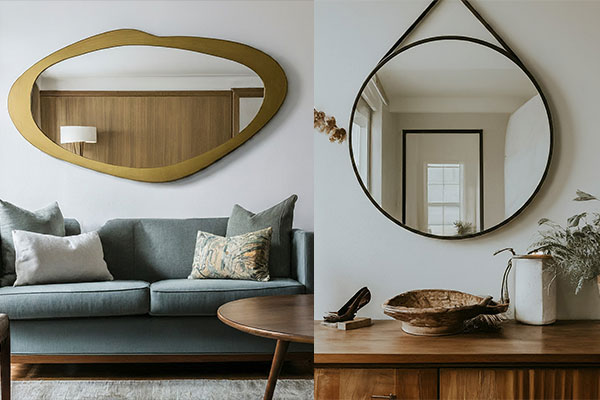
Frames for mirrors come in various materials and styles. They offer versatility, enabling you to align the mirror seamlessly with the aesthetics of your room.
Wooden frames are suitable for traditional, rustic-styled interiors, especially in rectangular, square-shaped rooms with warm and cosy aesthetics. Metal frames on the other hand are best for Modern, Industrial and Minimalist interiors, lending a sleek and contemporary touch. Eclectic designs of irregularly shaped rooms with a mix of Boho furniture and decor can use driftwood or repurposed vintage mirror frames, adding a sense of character and history to the space.
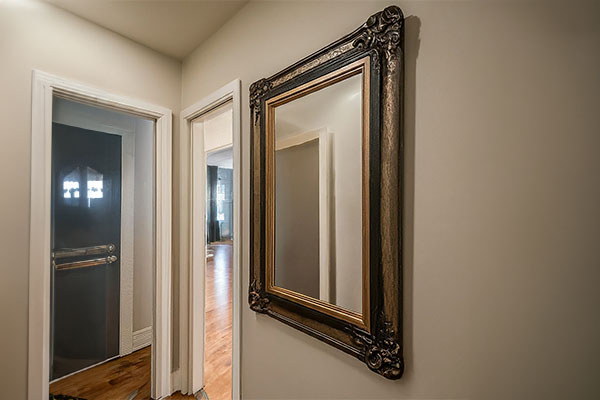
Lighting Enhancement (Artificial Lighting) Around Mirrors
Incorporate lighting fixtures around mirrors to enhance their visual impact. Sconces, pendant lights, or recessed lighting can be positioned to complement mirrors, creating an enchanting interplay of light and reflection. LED mirrors are also readily available in the market, allowing you to uplift your spaces with ease.
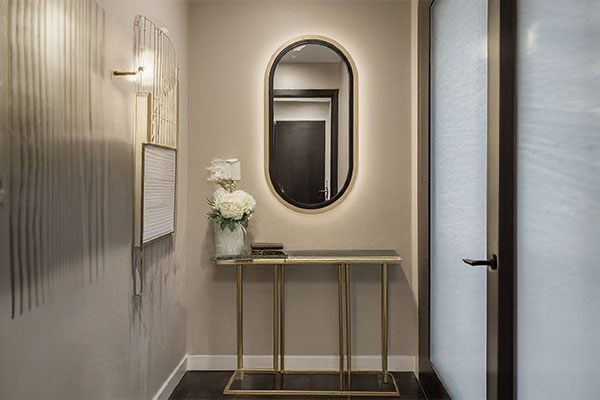
Have a bookcase or storage unit next to your TV console? Brighten up your living room by adding tinted mirror cladding to these furniture pieces to create a striking sophisticated look. Clad the console with a tinted mirror to render a chic appeal to the piece of furniture and have it virtually disappear and blend into its surroundings. Alternatively, complement a simple living room with an oversized tinted mirror and make a style element.
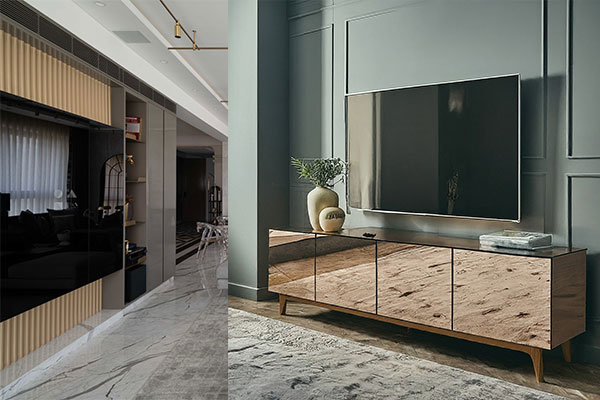
A mixed mosaic of high-definition and tinted mirrors in various shapes, like hexagons, squares, and rectangles can become the perfect DIY project for you, and can also be an exciting accent above furniture placed in transition spaces like hallways, staircases, foyers etc.
Learn more about Saint-Gobain designer mirrors.
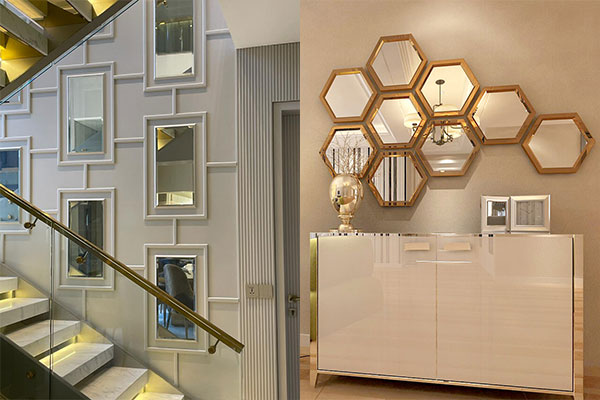
A high-definition, clear, non-framed, full-height signature mirror wall can elevate your normal living room interior to a chic, straight out-of-the-design-magazine cover living room in the blink of an eye. Try tints to mellow down the reflectivity while still visually doubling the space.
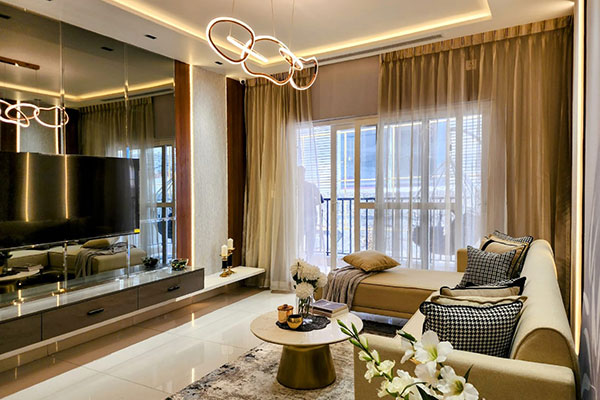
Why just walls when you can effortlessly expand the visual volume by incorporating mirrors on the ceiling? Instantly add glamour and a sense of space by incorporating any of the above ideas (accents, mosaics and even oversized mirrors) for your ceiling but with a safety film protection.

Well-placed singular mirror pieces or even a combination of pieces with sleek minimalist or elaborate antique frames can give your guests an ethereal experience while being ushered in. Adding indoor plants can add to the creation of a warm, natural space.
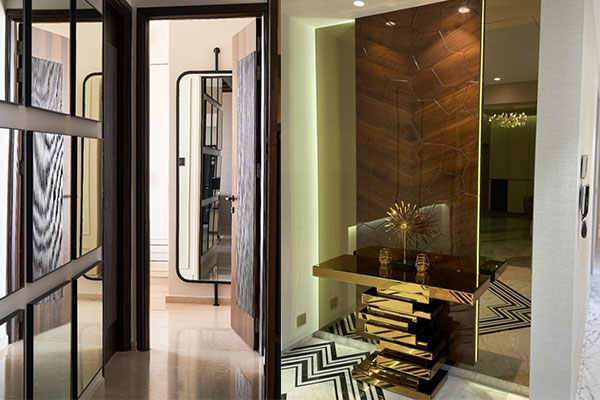
Then the focal point of the living room need not be the TV alone. Walls with signature mantel furniture, console tables, etc. can also take some of the limelight by using contemporary, high-definition rectangular or square mirrors. They can be used in pairs, and lit using strip or focus lighting.
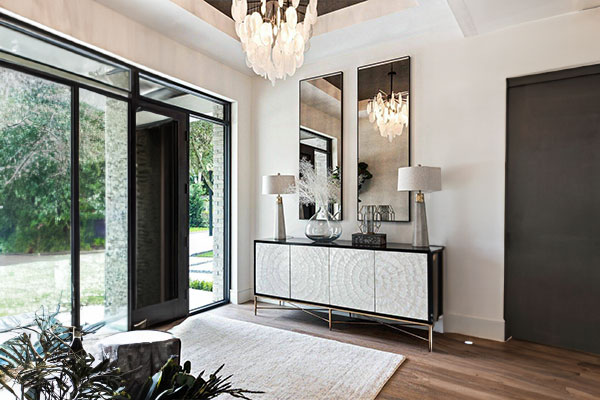
Lean a stylish, simple wooden framed mirror in a cosy nook or corner, and decorate it with coir rugs, macrame wall decor, and some tropical plants in earthen pots - a quiet free-spirited reading corner is ready for your living room, with minimal drilling or glueing requirements.
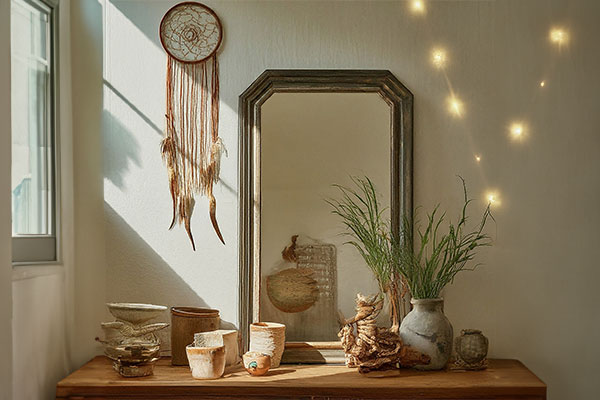
Integrating mirrors into the design of your living room not only boosts its visual tableau but also enhances its practicality and ambience. Through careful selection of mirrors, considering placement, size, layout, and lighting effects, you can craft a captivating visual composition that mirrors the dream home.
Embrace the remarkable impact of mirrors and allow them to become the focal point of your living room decor; they can cast a radiant glow that enhances every aspect of the space with charm and allure.
How can mirrors enhance a living room?
Mirrors can significantly enhance a living room by amplifying natural light, creating a sense of space, and serving as decorative focal points. They can transform the look and feel of a space, making it brighter, more open, and visually appealing.
Where should mirrors be placed in a living room?
Mirrors can be strategically placed near windows to maximize natural light, above mantels to draw attention, or at entry and exit points to create depth. These placements not only enhance the room's aesthetics but also contribute to a more dynamic and inviting environment.
How do different mirror shapes affect design?
Different mirror shapes can influence the overall design of a living room. Circular mirrors add softness and fluidity, which complement rounded layouts, while rectangular and square mirrors bring balance and proportion, especially in minimalist or modern designs.
What should be considered when selecting mirror frames?
When selecting mirror frames, it's important to choose materials and styles that match the room's overall aesthetic. Wooden frames are well-suited for traditional or rustic interiors, while metal frames are ideal for modern or industrial designs, adding to the room's cohesive look.
How can lighting enhance mirror effects?
Lighting plays a crucial role in enhancing the effect of mirrors in a living room. By incorporating fixtures like sconces, pendant lights, or LED strips around mirrors, you can create a captivating interplay of light and reflection, further elevating the room's ambiance and visual appeal.
Vaishnavi Sanjayan is a designer with a penchant for words and narratives. Read More